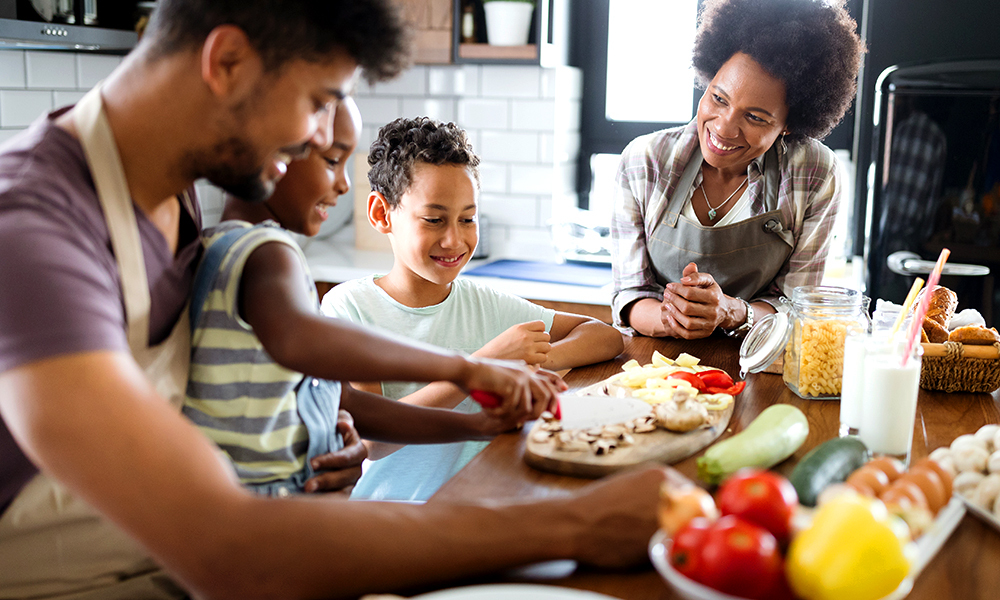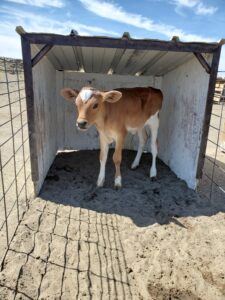Did you know that there is a national food waste reduction goal? By the year 2030, the U.S. aims to reduce food waste by 50% (the first-ever domestic goal to reduce food loss and waste)—and we can all play a vital part in ensuring that we reach it.
By making conscious choices when we’re at the grocery store, eating out, or preparing a beautiful meal for our friends and family, there are many ways we can preplan and prevent plate waste in creative and fun ways. Our food choices have a huge impact on our health and our environment. But, by shopping smart and storing our food correctly, you’ll find that there are endless ways that we can all reduce, reuse, and recycle our food waste—and that even the smallest amount of effort can cut it dramatically!
Save Time, Money, AND the Planet!
It may come as a surprise, but nearly one-third of all food produced in the world is wasted or discarded, which equates to about 1.3B tons every year. On top of this, industrialized countries like the United States waste more food than developing countries. About 30-40% of the U.S. food supply is never eaten—which not only wastes the food, but the resources it takes to produce it. Food is actually the single most common material landfilled (or incinerated) in the U.S. And, as you can imagine, this has a pretty significant environmental impact.
5 Easy Ways to Reduce Food Waste
The Nevada Dairy Farmers have always been dedicated to giving back to the communities where we live and work. To ensure that we can maintain our level of food production, we must also make sure that we are making conscious efforts to reduce our waste. There is a significant impact on valuable resources when it comes to increasing food production to meet demand, but if demand is wasting those resources, it can greatly affect our ability to produce and maintain our food supply.
But, hey! It’s not all doom and gloom! We all have the power to reduce our waste, and even the smallest changes can produce the biggest results on the overall scale.
1. Don’t Judge a Produce by Its Cover
You’ve probably seen a commercial or two from food and meal kit providers that leverage “imperfect” or “ugly” fruits and veggies—and there’s a reason why! When we try to find the best-looking produce to throw into our cart, tons of perfectly edible and delicious produce gets passed over for not being flawless, which leads to food waste. Consumer demand has led grocery stores to only purchase perfect produce, but many are starting to offer “ugly” fruits and veggies at a discount to combat waste. Hop on the trend and opt for imperfect produce and you’ll easily be doing your part to reduce food waste on a way larger scale than you could ever imagine.
Pro-tip: Separating produce that produces more ethylene gas from those that don’t is another great way to reduce food waste, too. Ethylene gas promotes ripening which leads to spoilage. Keep your bananas, avos, tomatoes, cantaloupes, peaches, pears, and green onions away from ethylene-sensitive produce like potatoes, apples, peppers, berries, and leafy greens and your imperfect produce will stay spoilage free!
2. Organize Your Fridge!
We’ve all done it. Food can easily go missing in the fridge if we don’t have a system in which we organize our groceries once we get back from the store. Nothing feels better than having a stocked fridge, but an overly-stocked fridge can quickly lead to food waste, as it’s hard to clearly see our food and know when it was purchased. Take a page out of the grocery store’s handbook and try the “first in, first out” method. For example, when you buy a new gallon of milk, place it behind the almost empty gallon to ensure the older one gets used first, not wasted. You can also create a designated space in your fridge for foods that you think might be going bad within a few days (avocados, we’re looking at you).
Pro-tip: Storing food is also really important, too! Did you know that potatoes, tomatoes, garlic, cucumbers, and onions should never be refrigerated? Check the temperature setting of your fridge and freezer and keep the temperature at 40° F or below to keep foods safe. The temperature of your freezer should also be at 0° F!
3. Preplan Your Shopping List
We know this one’s tough, but sticking to your shopping list is a great way to ensure that you are getting exactly what you need without overdoing it. Think about what meals you’d like to plan, prepare the items for the week, and make sure to check your fridge to ensure that you don’t buy something you already have. Also, be careful when buying in bulk! Bulk items that have a limited shelf life are often the culprit for increased food waste.
Pro-tip: Check your fridge as often as you can so you can keep track of what you have and what needs to be used. You can eat or freeze items before you need to throw them away!
4. Dust Off Your Blender
Food that is often discarded can be thrown into a nutritious and delicious blend that reduces food waste. The thought of peels, ends, and stems may not sound appealing in their whole form, but in a smoothie? You bet! The stems of greens like kale and celery are packed with fibers and nutrients. You can also throw in the tops of beets, strawberries, carrots, or radishes, too!
Pro-tip: Wilted herbs, overripe bananas, chopped broccoli stalks, and any other imperfect foods can be thrown into your blender with a little ice, water, yogurt, or milk to make a delicious and filling smoothie that’s not only sustainable, but satisfying!
5. Control Your Portions (Even When Eating Out!)
When you’re making your shopping list, it’s important to consider how many meals you’ll eat at home and how often you’ll eat out, too. Including quantities is a great way to build out your shopping list so you’re always buying the right amount of food.
For example: “leafy greens (enough for a morning smoothie and two lunches).”
Buying food in large quantities only really saves you money if you use all the food before it spoils, and that can be hard to do if you buy more than what you and your family will actually consume. This is something to keep in mind when you’re eating out, too. Ask for smaller portions to prevent plate waste and curb overeating, or ask for a box! You can’t go wrong with leftovers (just make sure to store them correctly).
Pro-tip: Use the serving size information on the Nutrition Facts label. Not only will it help you portion your meals and snacks, but it’ll also help give you a better idea of what proper portions are over time, which definitely helps you out when it comes to writing your shopping list!
We Have the Power to Affect Real Change
All in all, there are many ways that we can all do our part to reduce, reuse, and recycle our food waste in a way that’s beneficial to our planet, our resources, and our overall health.
On the farm, we’re continually looking for ways to recycle water and improve sustainability. Our goal is to create nutritious, delicious dairy for our community while sustaining the land for generations to come. By making small, simple shifts in the way we view our food, we can save time, money, and resources, all while enjoying our favorite meals and still eating to our heart’s content!



